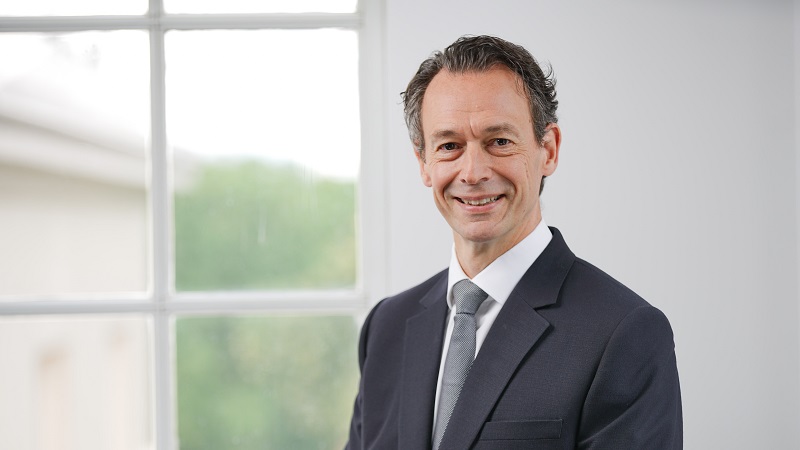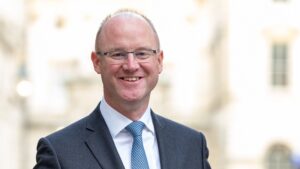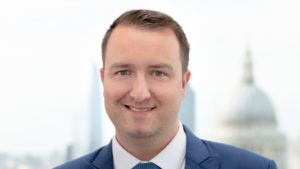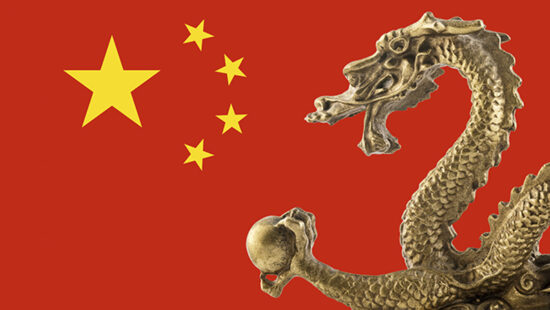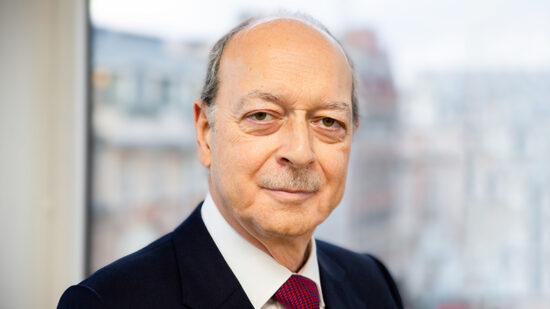When managing family wealth, everyone is trying to avoid the cliché, ‘the first generation makes it, the second generation spends it and the third generation blows it’. As such, it is worth taking notes from a family that has nurtured its capital through multiple generations.
J Stern & Co started out managing the wealth of the Stern family, accumulated and sustained over generations. Today, it is a specialist investment partnership offering its services to families, entrepreneurs, trusts, charities and other long-term investors.
Jean-Yves Chereau is part of a team that manages two core investment strategies on behalf of its clients, including the group’s multi-asset portfolio. He has an eclectic background – a French lawyer by training, he has been a Londoner for 33 years and built a lengthy and diverse career in investment management.
Steering a course
His route to J Stern has taken in equity research on the sell-side and managing European equities on the buy-side. He briefly ran his own hedge fund before working for a range of other hedge funds and proprietary trading desks. He worked for Nomura and Millennium Partners, before taking the decision to move to a family office in 2008.
This varied background made him well-suited to managing multi-asset capital. “While I spent time running equity portfolios, in my time in hedge funds I worked across the capital structure, including credit selection and non-correlated strategies. My work at J Stern is really the accumulation of all those years,” he says.
He met Jerome Stern, a scion of the Stern banking family, in 2013. Stern was on the hunt for someone to manage the family’s capital, generated from the sale of Banque Stern to UBS in 1988. The original group of investment managers was retiring and he needed a replacement.
The Stern family can trace its roots back to the 17th century merchants of the Frankfurt Judengasse, and its history is melded with the great merchant banks of the 19th and 20th century, including BNP Paribas and Deutsche Bank.
The family started out in wine making but – possibly influenced by their neighbours, the Rothschilds – realised banking could be a more lucrative pursuit. In 1805, Jacob Stern converted the family business into a bank called Jacob SH Stern & Co. He had five sons, sent two to Paris, two to London and one to Berlin, where they all founded banking houses.
Today, it has gone from managing the wealth of one family to serving 50 global families. The Stern family, conscious that the firm shouldn’t be seen as their own vehicle, can never hold more than 25% of the assets and it is run as a partnership.
Self-fulfilling growth
The investment philosophy is straightforward, says Chereau. “Invest in what you understand. It sounds simple, but it is surprising how often it doesn’t happen. We also believe that we have to do the work ourselves. We have a substantial investment team across both equities and credit. Everything is run from the bottom up and everything needs to be clear, simple and transparent.”
Money is managed for the long term, which is “the only way to generate superior returns”, says Chereau.
They are trying to harness the compounding effect on returns by investing in businesses selected with discipline, rather than because they are part of an index, and believe that certain industries should simply be avoided.
The low turnover approach helps to keep costs to a minimum, which is also achieved by holding equities and mainstream credit securities directly. It is the approach that’s been followed by the Stern family for over 60 years.
The investment engine powers both the family office portfolios and two Ucits funds – Star Multi-Asset Income, which Chereau runs, and the World Stars Global Equity Fund, managed by Christopher Rossbach.
The equity team has a clear quality bias, though marries this with an assessment of value. Chereau says: “We are looking at companies that have a number of factors that make them exceptional. It may be a product, it may be market share, it may be brand or position in the market, but anything that delivers long-term growth in revenues.
“Out of that product comes pricing power, an ability to protect margins and generate superior earnings and cashflow. It becomes self-fulfilling because companies can then re-invest in new products, or – and we have seen this with a lot of our companies recently – buy competitors and become stronger.
“The compounding effect is about this self-fulfilling growth.”
This tends to lead them to certain sectors. At the moment, for example, the equity portfolios have a higher weighting in healthcare and digital technologies.
Chereau explains: “These are companies with great potential for growth, that are not particularly cyclical. We tend to avoid sectors such as banks, utilities and other sectors where the regulator can change the rules at the last minute.”
Typical holdings for the group include Adobe and LVMH.
Surviving the slump
The group has similar objectives for its fixed-income holdings. They want to generate an attractive yield from companies that are both well-established and resilient. However, Chereau admits this has become increasingly difficult during recent years as fixed-income yields have slumped. Their solution has been to turn to high-quality emerging market corporates.
“To achieve the yield, we invest 80- 90% in emerging markets, all in corporate bonds. The key point is that, in all the different countries, we can find issuers that are high quality, but if they are trading in developed markets, they will have a much lower yield.
“The spread comes from the perception of country risk. Country risk for a corporate issuer is much less relevant than what’s under the bonnet.”
He gives the example of a Turkish company in which they invest. It is a leader in its field, with broad exposure to European markets. It has a brilliant management team. He points out that if they were trading in euros, they would have a yield of 2-3%, but because they are in Turkey the yield is far higher, even though the business is sound.
Holding heroes
Other holdings in this segment of the portfolio include Banco do Brasil, the oldest Brazilian bank with retail, corporate and agribusiness clients. It is government- owned and systemically important in Latin American, but also has a quality loan portfolio and strong capitalisation.
IHS is a telecoms tower infrastructure owner and operator in Africa, Europe and the Middle East, which is benefiting from rising demand for data services. Chereau likes it because it is a defensive industry with long-term contracted revenues.
Nevertheless, this approach requires discipline because there can be greater risks involved. There are periodic crises in emerging markets, which may be an opportunity to buy or a catalyst to sell – and it is important to know which one.
However, it has helped performance since the start of the year. The bonds are high-yield and therefore much less sensitive to interest rate rises. As such, these holdings have helped cushion the volatility experienced in stock markets.
Select collective funds
By and large, the group invests directly in securities rather than using collectives, believing this provides more nuance to their portfolios. The exception is for alternative investments, where they will use investment trusts in order to gain access to less liquid assets such as renewables infrastructure, music royalties, litigation finance, trade finance or even football finance.
This segment of the portfolio is focused on uncorrelated options. Chereau says the correlation between asset classes is a perpetual challenge, which has become particularly acute since the 2008 global financial crisis. All opportunities are assessed using the same high-quality and value criteria, looking for income-generative opportunities where returns show a low relationship to stock markets.
Multi-asset income fund
The multi-asset income fund has been going since 2015. Chereau says: “It came out of a number of meetings with clients, where people were saying, ‘We have a number of expenses, such as school and university fees. How much do we need to invest to generate an income of ‘x’ reliably each year?’
“I reverse-engineered the mix of assets I would need to provide a yield of 4%, with a total return over the long term of 6-8%. The asset allocation came naturally.”
The fund currently has a neutral asset allocation of 35-55% credit, 25- 45% equities and 15-25% non-correlated assets. “The high-yield segment of our portfolio is currently generating a yield of around 7%, while the alternative income investment trust segment is generating an income of 4.5-7.5%. The equities are far lower yielding, at 1-2%, but they generate capital growth and provide protection against inflation.
“With this mix, we achieve a 6-8% return, but with around half the volatility of the equity market.” Chereau describes it as a practical product – investors know how much income they’ll get and when.
It’s a low turnover portfolio, so the group’s team of analysts don’t need to come up with new ideas all the time. The holding period for equities is generally five years and bonds are usually held to maturity. This gives the analysts a certain freedom. “The analysts can work on their own ideas. We have approved lists for individual stocks that go through an investment committee,” he says.
The investment committee comprises Chereau, Jerome Stern, Rossbach, who is chief investment officer, and a number of the analysts. “We all discuss ideas and agree whether they should go on the approved list. However, the portfolio managers make the final decision. They will discuss the ideas with the analysts to ensure they understand the story fully.”
The result should be a diversifying portfolio, relatively uncorrelated to equity markets, with a reliable income. It has produced a positive return in each year since inception, with the exception of 2018 when it lost 1.2%. It has also stuck to its low-volatility mantra, with annualised volatility of 8.3%.
The group’s services are designed for families, trustees, charities and institutions, and everyone’s portfolios are managed through the same ‘engine’ with the same philosophy. Chereau says: “The funds are run with the same investment approach as is managing the family’s capital. There is a full alignment of interest.”
This article first appeared in the April edition of Portfolio Adviser Magazine.
